SINOLANC RADIANT UNDERFLOOR HEATING
Underfloor heating system with capillary tube mats is widely used and acceptable for providing radiant heating in all buildings. It is also ideal for retrofitting underfloor heating and connecting to the existing heating system.
The mats are either integrated into an existing screed or laid directly on an existing floor as a thin-layer underfloor heating system and enable gentle temperature control of floor surfaces.
Due to the large exchange surface and even heat distribution, SINOLANC floor heating can transmit high performances with a lower supply temperature at 28-32℃. This has positive effects on reducing energy consumption, saving costs and protecting our environment.
Within the construction, the thin capillary tubes with an outer diameter of 4.3 mm only have to be covered with leveling or sealing compound of 10mm thickness. The limited thickness minimizes the thermal resistance and leads to the heating reacting rapidly to temperature changes in just a few minutes and achieving high specific heating capacities.
The SINOLANC capillary tube system only requires approx. ¼ of the heating-up times compared to conventional underfloor heating systems.
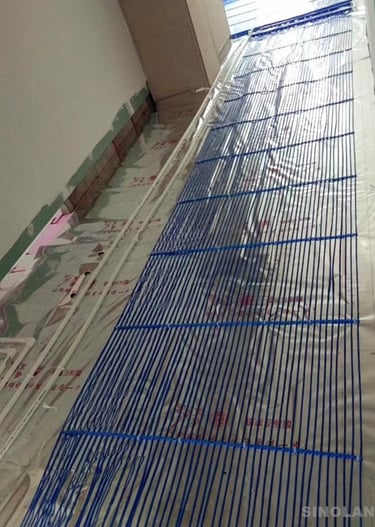

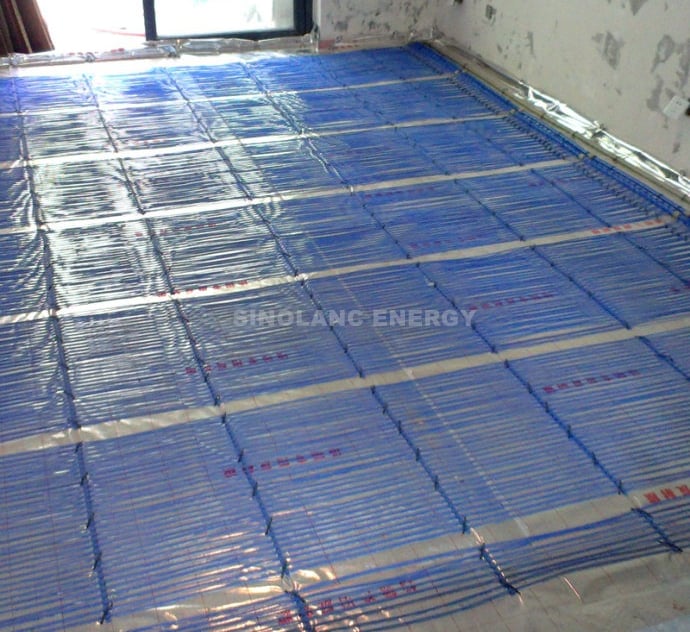

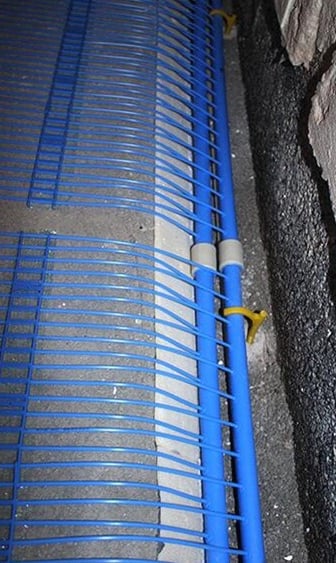

FEATURES
Large exchange surface
Low installation height
Rapid heating up
Low flow temperatures
High energy efficiency
Even heat distribution
In combination with the heat pump, higher outputs can be achieved
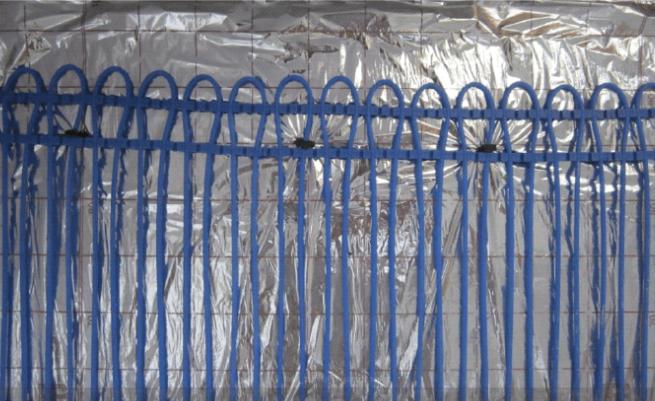

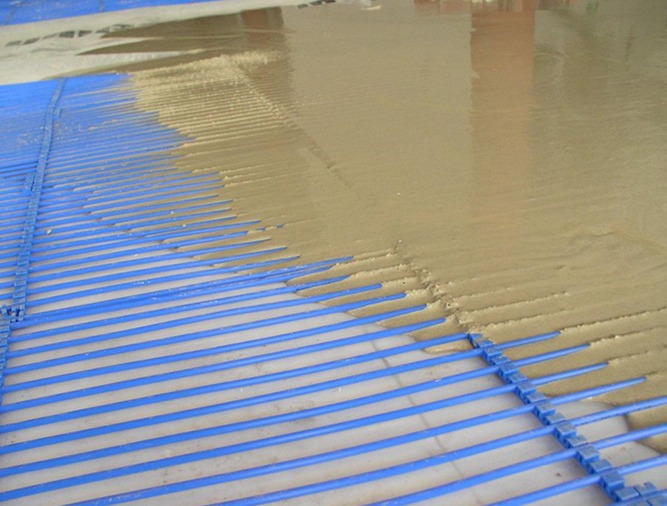

The capillary tube mats are laid and fixed on the insulation.
Mat distributor pipes are placed in slots
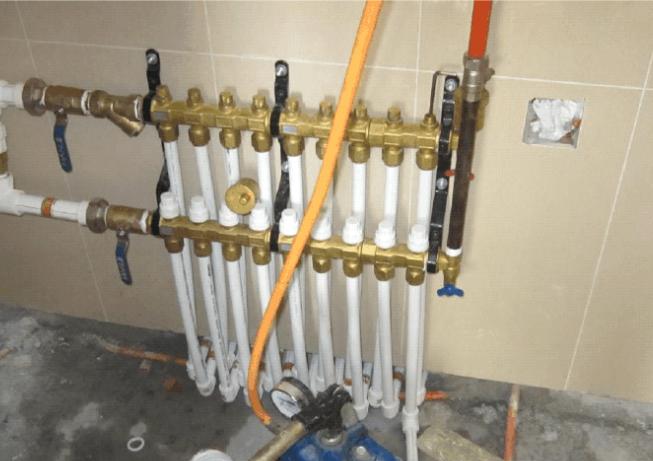

Connect the collector tubes to manifolds.
Pouring the screed on capillary tube mats.
CAPILLARY TUBE MATS
HEATING& COOLING APPLICATION
Mat connect to another and main tubes
SINOLANC radiant ceiling system can not only be used for cooling, but also for energy-efficient heating. The implementation of ceiling heating and cooling in one system reduces operating costs.
Capillary tube mats can be installed either in or on the ceiling constructions. Due to the small outer diameter of the capillary tubes and their high degree of flexibility, capillary tube mats can also be plastered directly onto the bare concrete ceiling. Even the vaulted and curved ceiling structures is possible with capillary tube technology.
Heating capillary tube mats installed close to the ceiling surface, this minimizes the thermal resistance from the heating water to the thermally activated surface. It can be operated with low supply temperature, which are only slightly above the room temperature. The result is high energy efficiency.
PLASTER ON CONCRETE CEILING
Smooth surfaces, Excellent heating and cooling performance, Design comfort.
SINOLANC RADIANT CEILING
HEATING & COOLING
Cooling radiant ceilings provide a high level of acceptance and satisfaction among users. In summer, the ceiling cooling supplies a uniform temperature reduction without the disruptive effects of air conditioning such as cold air circulation and annoying noise.
For cooling purposes, SINOLANC Capillary Tube Mats are preferentially installed either in or on the ceiling; in this case the surface temperature of the ceiling is, depending on the supply temperature, approx. 19 °C at only 2 to 3 K spreading between supply and return (supply temperature = usually 16 °C; return temperature = 18 °C or 19 °C). Depending on the type of ceiling or the way the capillary tube mats are installed, cooling capacities of up to 100 W/m² (Δ=10 K) can be achieved for closed radiant cooling ceilings.
FEATURES
Heating and cooling with one system
Low installation height
Even heat distribution
Directly perceptible radiant heating
Low air circulation, healthy indoor climate
Silent system without annoying radiators
Low energy cost

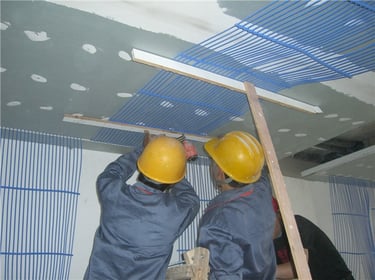
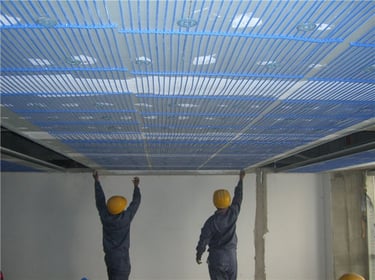
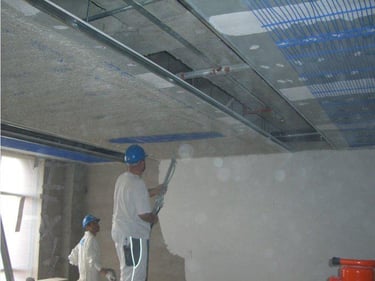





Sinolanc capillary tube mats with plaster ceilings are popular because of their simple appearance and installation. The capillary tube mats are plastered directly underneath a concrete ceiling, which invisibly integrated into the ceiling not only provide excellent cooling in the summer, but can also be used to heat comfortably and energy-efficient. The renovation of plaster ceilings does not require much effort.
A complete embedding of the capillary tubes is achieved with a spraying plaster layer thickness of 10-15 mm. Mat distributor pipes and supply lines are accommodated in the a slot or void of the ceilings. A large-area and even heat conduction is achieved.
Due to the ceiling construction is thinner than 15mm, the heat exchange between the mats and the plaster surface is intensive to ensures a rapidly heat-up or cool-down. The water circulates noiselessly in the capillary tube mats and regulates the room temperature largely by radiation, partly by convection. The plaster cooling ceilings achieve impressively high heating and cooling capacities.
PREFABRICATED RADIANT GYPSUM INSULATION PANEL WITH AN INTEGRATED CAPILLARY TUBE MATS
The capillary tube mats are embedded within prefabricated gypsum boards, aluminum foil insulation panels, or metal plates, or adhered to their surfaces to ensure uniform heat transfer.
The capillary tube mats are connected to the supply and return water system via main pipes and linked to the entire system using flexible hoses or specialized pipe connectors, ensuring smooth fluid circulation.
The prefabricated radiant panels with integrated capillary tube mats can be directly installed on walls, ceilings, or floors. They are fixed using specialized adhesives, screws, or keel structures. The aluminum foil layer enhances thermal radiation efficiency, while the gypsum board itself provides a certain level of insulation. This modular installation is quick and convenient which is suitable for flat ceiling application.


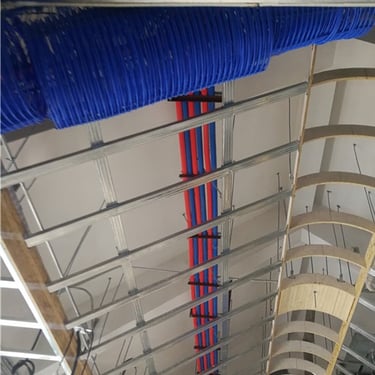
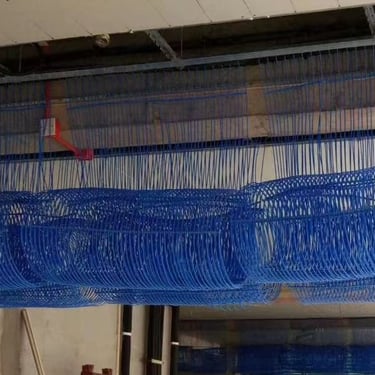
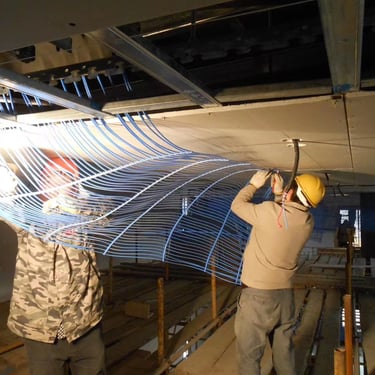
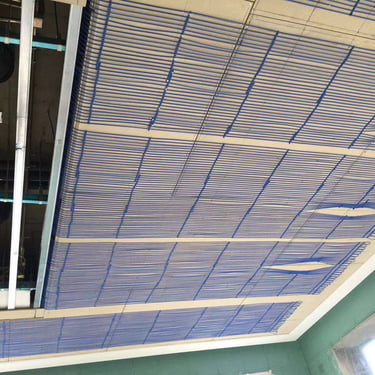
Sinolanc capillary tube mats ceiling system offers an efficient and quick install solution for heating and cooling in drywall applications. By integrating lightweight capillary tube mats directly into a suspended ceiling structure on the top side of the plasterboard, this system delivers comfortable, uniform temperature control with minimal heat loss.
Ceiling Cooling or Heating In Drywall /Plasterboard Installation:
1. Substructure Installation: Prepare and Install the Metal Framework: Secure an aluminum or steel framework to the ceiling as a substructure to support the plasterboard. Leave a gap of about 100 mm between the support profile and the wall connection profile. This gap allows space for inserting the capillary tube mats and connecting supply and return pipes.
2. Supply and Return Pipe Layout
1. Pre-lay the main supply and return pipes in the ceiling void to ensure smooth water flow for uniform heating and cooling.
2. Connect the mat distributor pipes of the capillary tube mats in accordance with the dimensions of the substructure by means of heating element socket welding.
3. Capillary Tube Mat Installation
1. Place the mat distributor pipes of the rolled‐up capillary tube mats on the metal framework in the ceiling void and loosely fixed the mat distributor pipes to the basic profiles with cable ties. Ensure sufficient space for welding connections.
2. Use heating element socket welding to connect the mat distributor pipes to the supply and return lines.
3. Secure the mats using retaining clips between the support profiles. Ensure the open side of the capillary tube mats faces the drywall panels.
4. Openings for lamps and ventilation grilles are possible up to a diameter of approx. 100 mm by pulling the capillary tubes apart.
4. Insulation Installation
1. Apply insulation material (such as mineral wool or polyurethane) between the support profiles to minimize heat loss and enhance efficiency.
2. The insulation should slightly press the capillary mats against the drywall to ensure optimal heat transfer.
5. Drywall Panels Installation
1. Secure drywall panels to the metal framework using self-tapping screws, ensuring proper alignment and avoiding damage to the capillary mats.
2. Any type of drywall panels can be used - whether metal, unperforated or perforated ceiling.
6. System Testing and Finishing
1. Perform an initial air pressure test to check for leaks, followed by a liquid medium test in accordance with industry guidelines. Test at 1.5 times the working pressure for a duration of at least 20 minutes to check for leaks.
2. Keep the system under test pressure throughout the remaining installation process.
3. Once testing is successful, seal drywall joints, apply finishing, and complete painting.
© SINOLANC ENERGY
© SINOLANC ENERGY
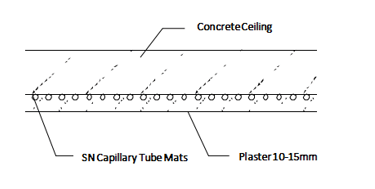

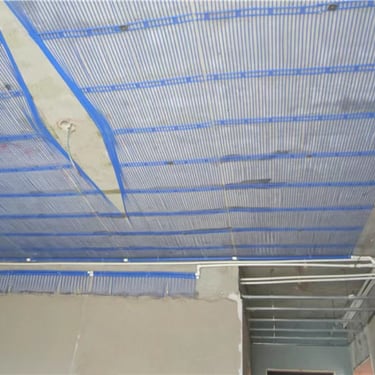
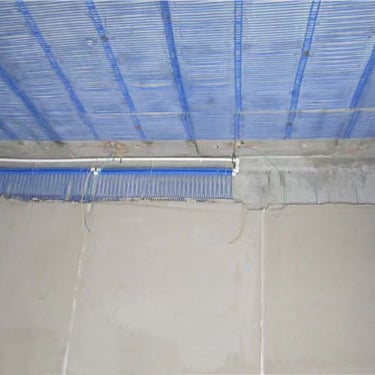
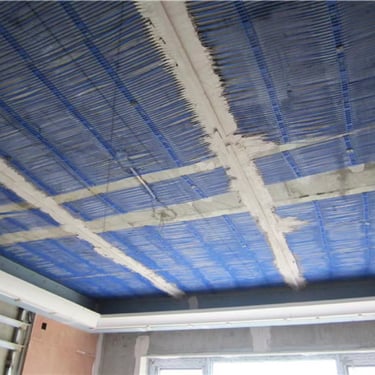
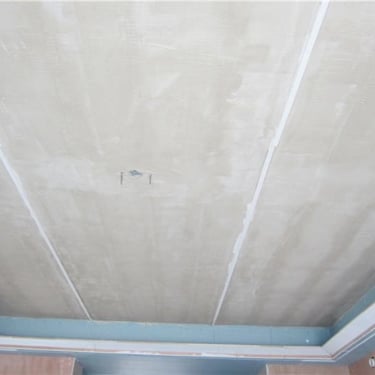

Drywall Plasterboard ceilings
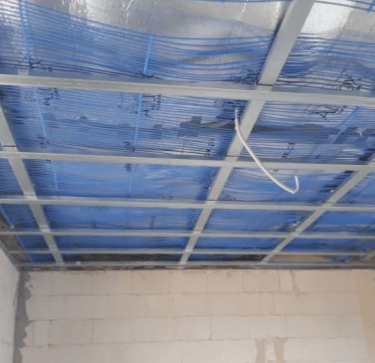
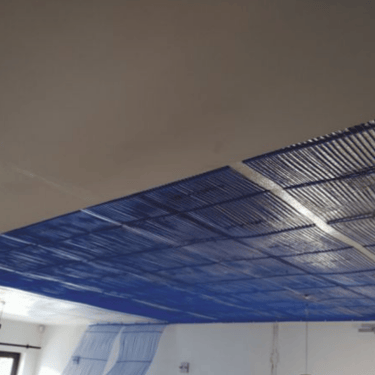
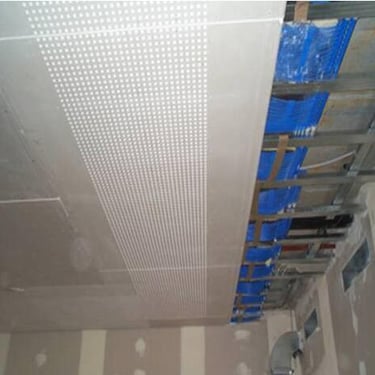
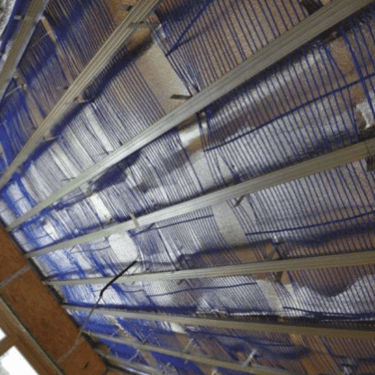
Preparation of the Ceiling Structure
1. Install a suspended gypsum board ceiling with sufficient void space to accommodate distributor pipes and supply lines.
2. Ensure the ceiling structure can support the additional weight of the capillary tube mats and the plaster layer.
Positioning the Capillary Tube Mats
1. Mount the supply and return lines for capillary tube mats in the ceiling void, leaving enough space for connections.
2. Secure the two mat distributor pipes of the rolled-up capillary tube mat to the substructure profiles using stainless steel clips or galvanized staples, then connect them to the supply and return lines.
3. Guide the capillary tube mats through a pre-cut slot in the gypsum board panel to the room side.
4. Weld the capillary tube mats together to form a closed hydraulic circuit. Ensure all connections are secure and leak-proof.
System Testing:Perform a leak test at 10 bar, keeping the system filled with water throughout the installation to detect potential damage.
Applying the Plaster Gypsum Board Panels
1. Close the ceiling structure with standard gypsum board panels, fixing them edge to edge
2. Apply a primer coat evenly within 48 hours before plastering to to enhance adhesion.
Securing the Capillary Tube Mats and Plastering
1. Roll out the capillary tube mats and attach them tightly to the underside of the gypsum board over the entire surface and fasten them using stainless steel or galvanized staples.
2. Apply a 10-15 mm plaster layer using professional techniques, ensuring even coverage.
3. Ensure the plastered surface is properly separated from adjacent building components to prevent cracks due to thermal expansion. Allow the plaster to dry and cure properly before proceeding with final ceiling finishes.
Final Inspection and Commissioning
1. Conduct a pressure test to verify the integrity of the hydraulic system.
2. Inspect the installation to ensure proper attachment and finishing.
3. Once confirmed, complete the ceiling construction and proceed with system commissioning.
PLASTER ON GYPSUM BOARD
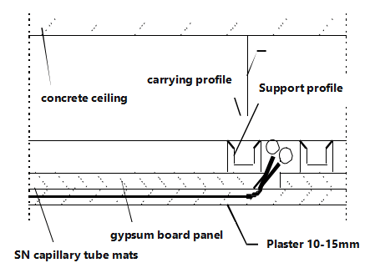

The capillary tube mats are plastered underneath a suspended gypsum board ceiling.
Mat distributor pipes and supply lines are accommodated in the void of the suspended ceiling.
The capillary tube mats welded together to a hydraulic circuit, are connected to the supply and return lines. The ceiling void can also be used for further installations.
The capillary tube mats run through a slot in the gypsum board panel to the room side and are attached there with stainless steel clips or galvanized staples.Plaster, for example, is applied using the spraying method up to a layer thickness of 15 mm.
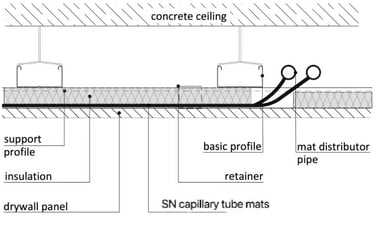

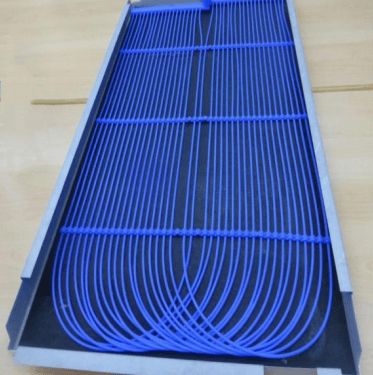
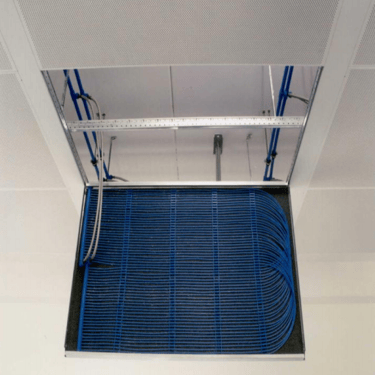

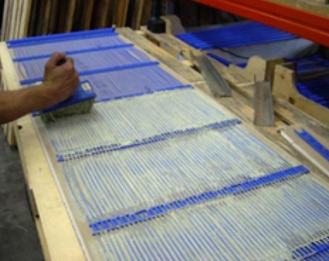
DEW POINT IN COOLING MODE
Surface cooling systems bear the risk of dew point exceedance and of condensation on the cold surface. This risk can be safely ruled out! Therefore each control zone is equipped with one or several dew point sensors. To avoid condensation on the cooling surface, in case of a dew point risk the flow through the capillary tube mats is stopped by closing the control valve. Switching off the individual zones can be counteracted by using an enthalpy-based supply temperature control.
In large and intensively used office buildings cooling ceilings are often combined with a supporting ventilation system, so that dew point exceedance happens very rarely. This is necessary as a rule in order to provide all users with the required fresh air as well as to remove the bad air. The relative humidity is controlled by ventilation and maintained at a comfortable and within dew point non-critical range.
For this reason, cooling ceiling technology has been popular used in large office and administration buildings successfully for many years

SINOLANC WALL RADIANT
HEATING & COOLING
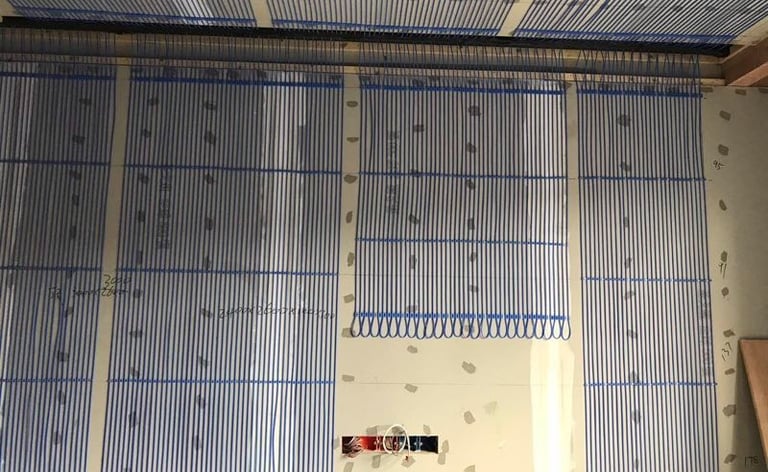

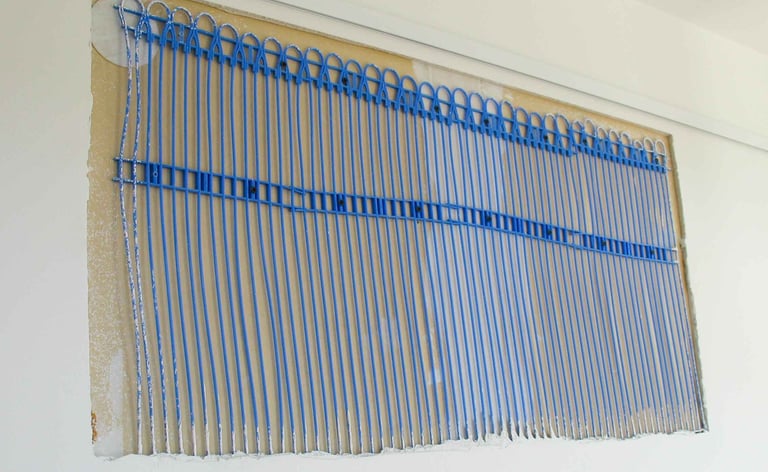

Sinolanc capillary tube mats can be integrated into walls of various designs and used as wall heating and wall cooling. The flexibility of the capillary mats allows them to be installed to all the available conditions. The radiant wall capillary mats are generally carried out using the plaster method or drywall.
Wall heating systems for plastering processes are the classic among radiant wall heating. The capillary tube mats are fixed directly to a wall (gypsum board, brickwork, concrete) with a load-bearing substrate and plastered in. All commercially available plasters such as gypsum, lime, cement or acoustic plaster are suitable. Thin plaster thickness of 10-15 sufficient to cover the heating pipes.
On the visible side, there is a closed, jointless plaster wall for the heat conduction over a large area. This results in a high heat output or cooling output at low system temperatures and save energy cost.
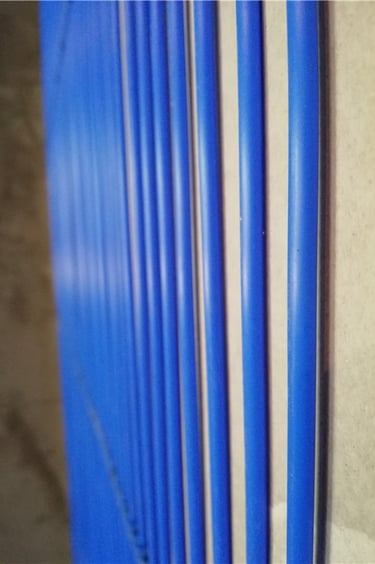

FEATURES
Pleasant radiant heat
Good choice for retrofitting
Draught-free and silent system
Low installation thickness
Heating and cooling only with one system
Flexibility of mats can be adapted to all available conditions
© SINOLANC ENERGY
CAPILLARY MATS
SPECIAL APPLICATION
In addition to being used as Heating and cooling system in room surface, Sinolanc capillary tube mats are widely used in various fields, including agricultural greenhouses, swimming pools, ice storage systems, subways and airports, hospitals and laboratories, data centers, museums and art galleries, as well as cold chain storage.
Feel free to contact us! We can provide customized solutions tailored to your needs and offer professional advice for your specific applications.
Capillary Geothermal Heat Exchanger
Due to the significantly heat exchange efficiency, the capillary tube mats be used as a geothermal collector when installing in the soil at a depth of 1.10 to 1.50 meters
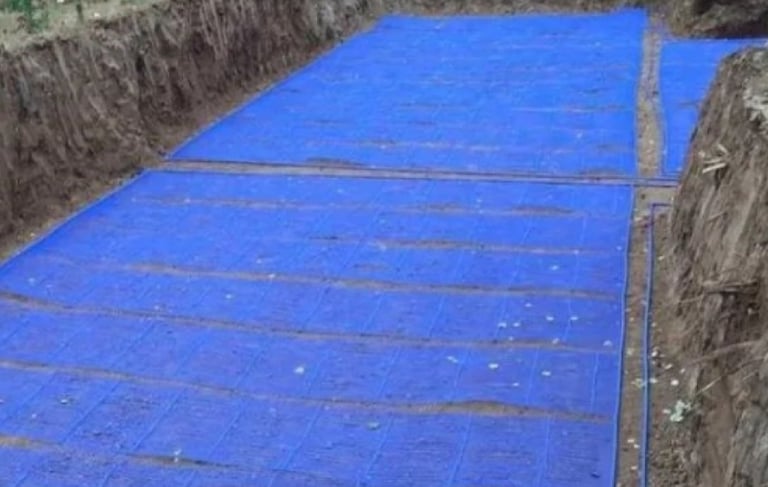

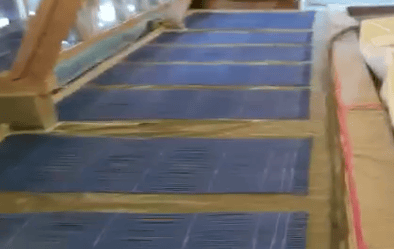

Constant Temperature Control
The capillary tube mats can be used in heating of outdoor swimming pools. Installing them into walls, floors and in relaxation chairs.
@image from SINOLANC customer's application
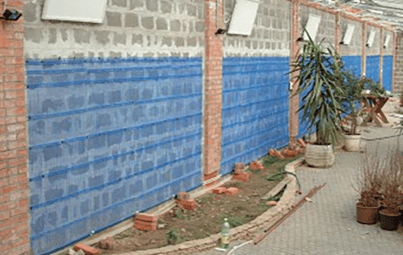

Capillary Tube Mats in Agriculture
Sinolanc capillary mat radiant technology can help the seedlings grow, anti-seasonal high value-added vegetable and fruit, ground soil insulation, etc. The installation of capillary mat in the greenhouse is very easy, as it can be buried under soil or hung on the wall. It has been successfully applying to high-tech agricultural demonstration bases.
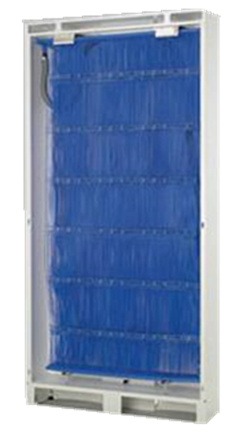

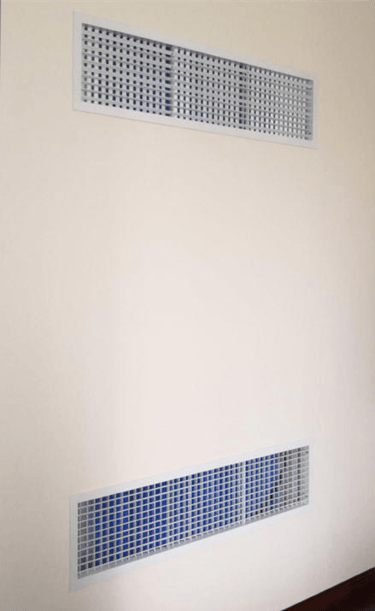

Gravity Convector Capillary Mats Conditioner
(Cabinet Type /Wall Type)
The capillary gravity cabinet with air supply outlet and a return air outlet. The capillary tube mat is placed parallel to the circulating cabinet. The main principle is to use natural convection and displacement ventilation for heat exchange, to achieve the natural circulation of air in the room, and the gravity cabinet can be used for both cooling and heating.
Capillary Tube Mats Applied in Subway Tunnels or Platforms
Laying ppr capillary tube mats within the surrounding rocks of subway tunnels, with flowing water inside capillary tubes, to absorb heat generated by locomotives, track friction, lighting equipment, etc. to the maximum extent possible through this medium, then transmitting it to buildings above ground for heating purposes; In summer, a similar mechanism is used to extract cold sources from within the tunnels for cooling buildings above ground.
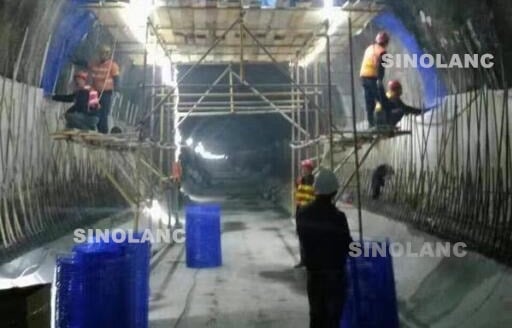

CONTACTS
P: +86 18920696269
E: energy@snlanc.com
ADDRESS
Sales Office : Floor 1-2 Henghua Building, Dagu South Street, Hexi District, Tianjin
Factory: No.6 Innovation Technology Park, Dongli District, Tianjin, China
Copyright © 2024 SINOLANC ENERGY
